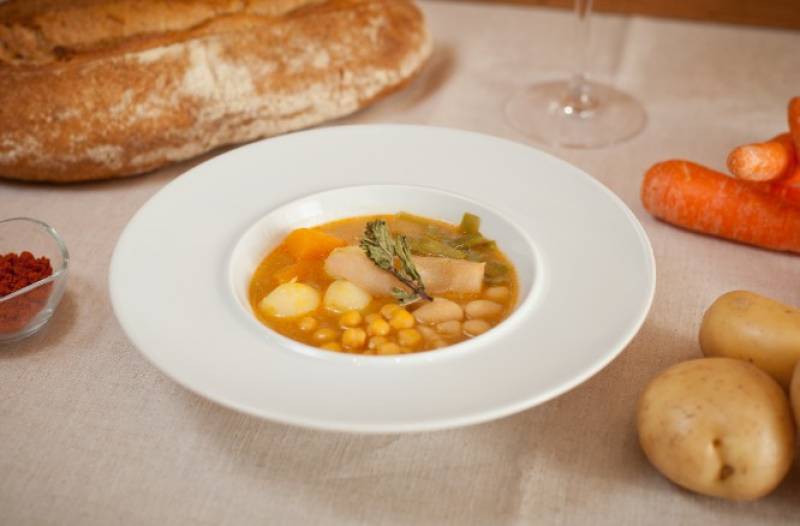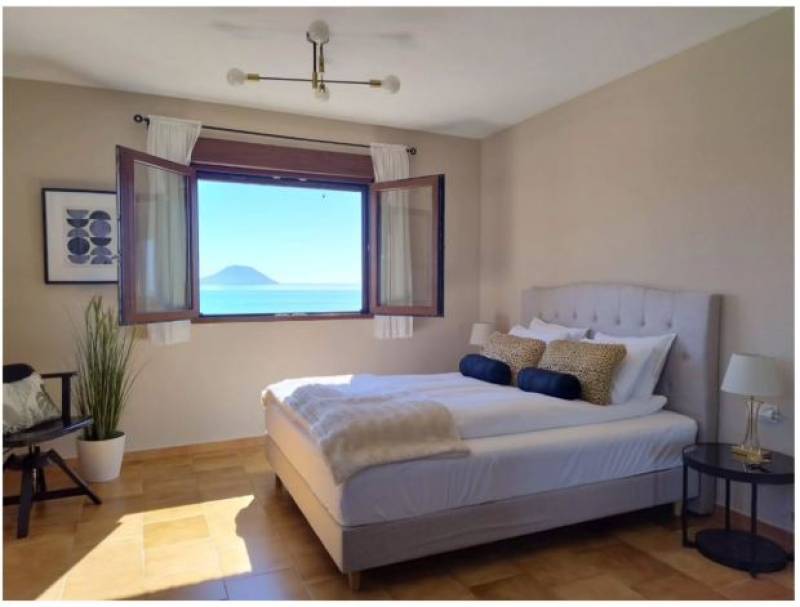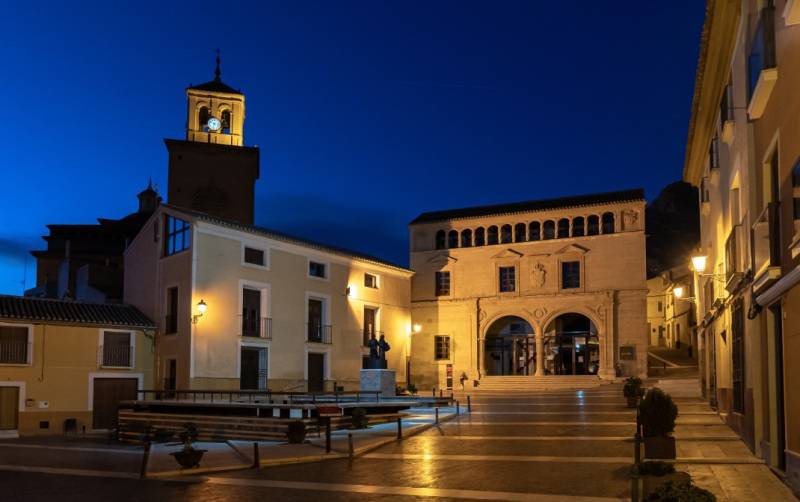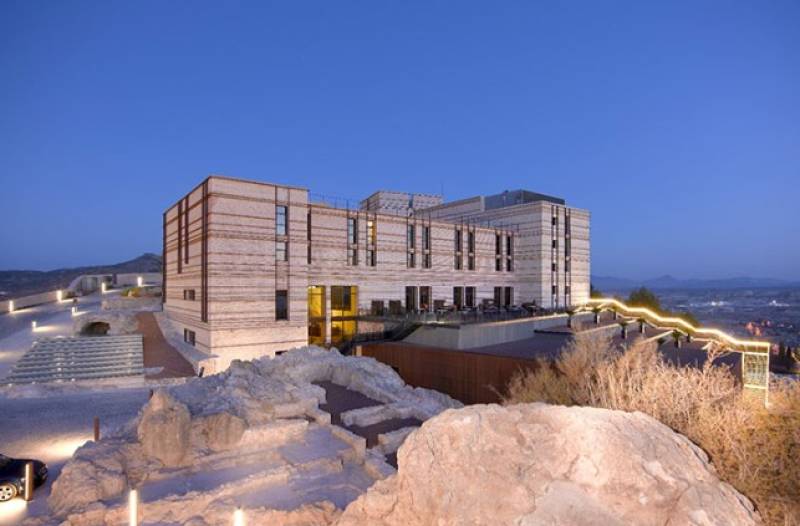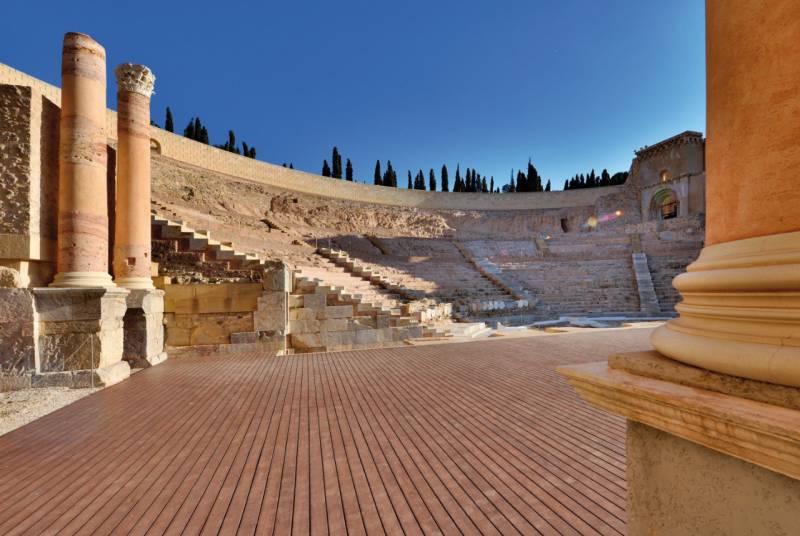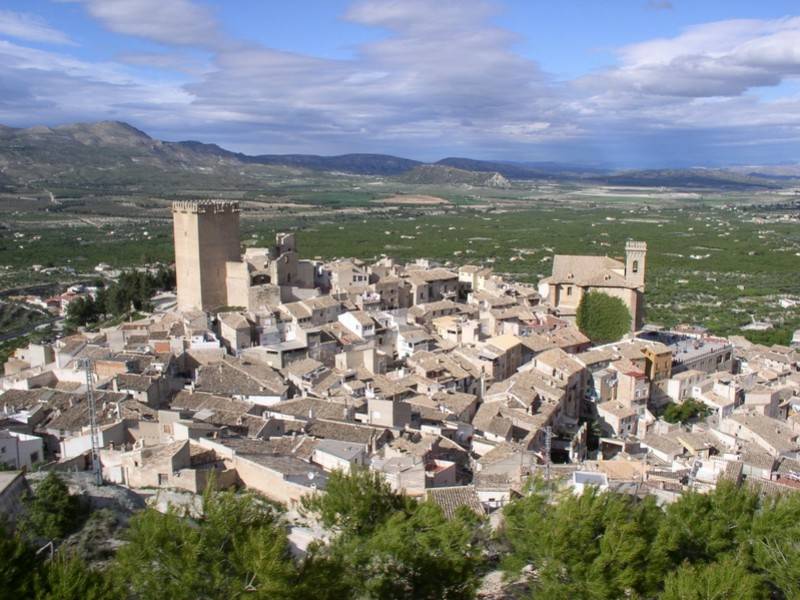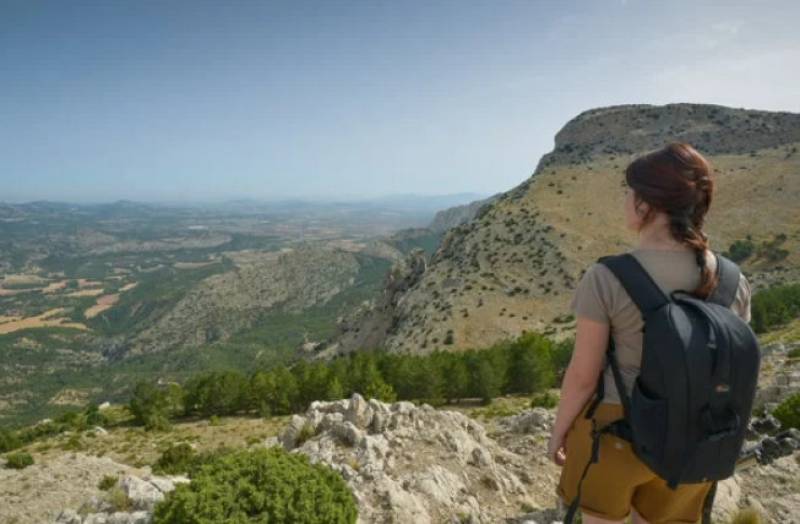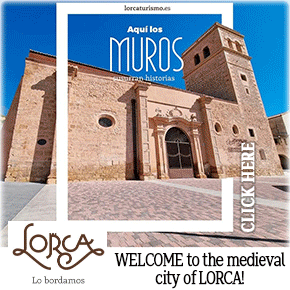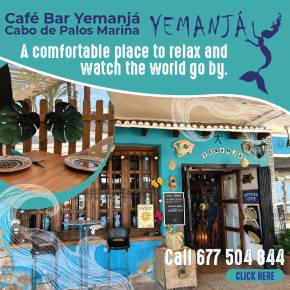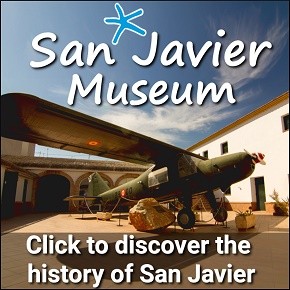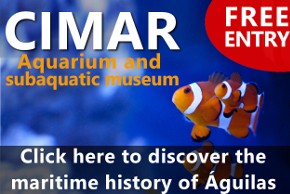
To be listed on the CAMPOSOL TODAY MAP please call +34 968 018 268.

Guidelines for submitting articles to Condado Today
Hello, and thank you for choosing CondadoToday.com to publicise your organisation’s info or event.
Condado Today is a website set up by Murcia Today specifically for residents of the urbanisation in Southwest Murcia, providing news and information on what’s happening in the local area, which is the largest English-speaking expat area in the Region of Murcia.
When submitting text to be included on Condado Today, please abide by the following guidelines so we can upload your article as swiftly as possible:
Send an email to editor@condadotoday.com or contact@murciatoday.com
Attach the information in a Word Document or Google Doc
Include all relevant points, including:
Who is the organisation running the event?
Where is it happening?
When?
How much does it cost?
Is it necessary to book beforehand, or can people just show up on the day?
…but try not to exceed 300 words
Also attach a photo to illustrate your article, no more than 100kb

Museo de la Ciudad, Murcia
Murcia, the museum of the City of Murcia
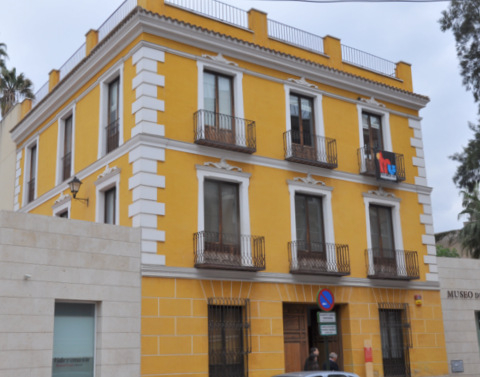 This museum is dedicated to the history of Murcia, and helping its visitors to understand the fascinating history of the city and how it evolved.
This museum is dedicated to the history of Murcia, and helping its visitors to understand the fascinating history of the city and how it evolved.
Its located in a beautiful 19th century building and is about a 10 minute walk from the main Town Hall on the waterfront if youre planning a route on foot, and is close to the Salzillo Museum, so both could be visited easily within a morning.
Its well arranged into logical order, showing the founding of the city, through to the modern place it is today, and is jammed full of fascinating facts and interesting tales about the city.
The great tragedy is that all the boards are in Spanish and there are no translations available. The museum does give you a good little booklet on the way in, which gives very basic information about the museum, but just doesnt have all the great little stories shown on the display boards.
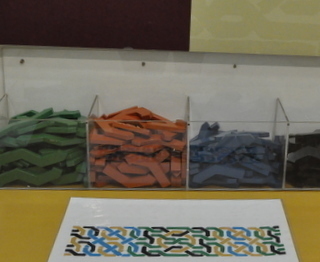 You can get the general idea, and the museum is worth looking around even if you dont speak Spanish, but unless your Spanish is Ok, you really wont get the full benefit out of this museum which is a real shame, as there are moments of inspiration here such as this game for the children to play which shows how complex tile decorations were made, which is really interesting even for big kids.
You can get the general idea, and the museum is worth looking around even if you dont speak Spanish, but unless your Spanish is Ok, you really wont get the full benefit out of this museum which is a real shame, as there are moments of inspiration here such as this game for the children to play which shows how complex tile decorations were made, which is really interesting even for big kids.
The area in which Murcia was founded was the home to populations of both the Iberians and Algarians long before the arrival of the arabs, who dominated and settled the length of this coastline. There are some extraordinary archaeological sites throughout the region dating from the period 600BC to 600AD which have yielded some really amazing sculptural pieces and remains, many of which can be seen in the excellent archaeological museums across the region and which never seem to feature in any of the tourist itineries.
One little site is just outside the city in La Alberca, the Martyrium, which dates from 600AD and was built to house the remains of a martyred saint, and yielded this astonishingly carved column which is in this museum. There are some more columns and other remains in the archaeological museum in Murcia from the same site.
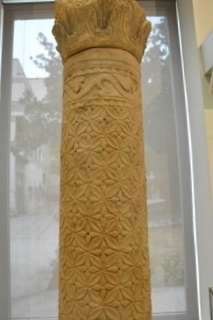 Although there are many remains of these other civilisations, Murcia itself began during the arab occupation.
Although there are many remains of these other civilisations, Murcia itself began during the arab occupation.
This area was known as Tudmir by the arabs, and was inhabited by two rival tribes, the Yemenies and the Midaries, who mutually loathed each other. This enmity dated back long before they arrived in this area, and although the dislike didnt boil over into anything more serious than resentful rivalry, there was constant tension in the area, which was ruled from Cordoba.
This all changed, however, due to the most trivial of incidents- an argument over a bunch of grapes.
One day, a Yemeni went down to the waters edge of the Rio Segura to fill his drinking flask, and decided to help himself to some grapes he noticed growing nearby. Unfortunately , the owner of the grapes, a Midare, saw him just as he was about to cut the branch and ordered him to stop. He refused, popped a grape in his mouth, and the enraged and insulted owner attacked.
A big fight ensued, in which the Yemeni was killed.
His tribe were furious and launched a raid on their rivals, which turned into a war.
Troops from Cordoba were sent to quash the fighting and an uneasy peace agreed, but by the time theyd ridden back to Cordoba, the fighting had broken out again.
Back they came, and the same thing happenend again.
Fed-up with all the fighting, the emir decided to leave troops in the area permanently and built a fortification with the highest walls in the arab kingdom.
Mursiyya was born.
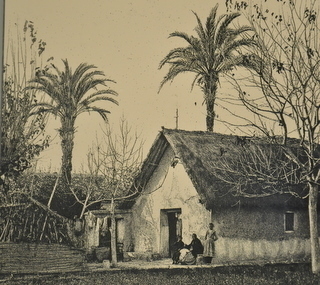 The fortifications developed into an extensive arab city, a centre for cultural exchange and trade. A dam retained water, which fed into a sophisticated irrigation system, feeding the orchards which surrounded Murcia and creating the orchards and agriculture for which the region is now famous.
The fortifications developed into an extensive arab city, a centre for cultural exchange and trade. A dam retained water, which fed into a sophisticated irrigation system, feeding the orchards which surrounded Murcia and creating the orchards and agriculture for which the region is now famous.
In the 12th century Murcia was a thriving walled arab city, large areas of which are still buried beneath the streets, but in the 13th century came under Christian rule in the hands of Alfonso X, known as El Sabio, the wise, who loved the city so much that he left it his heart when he died, which is still located in the cathedral today.
The museum takes us through the Mediaeval, the years of Baroque religious glory when the master sculptor Salzillo plied his trade and created some of the most beautiful religious sculptures in the city, to the 18th and 19th century, when the city changed beyond recognition and acquired many of the impressive architectural buildings which define it today.
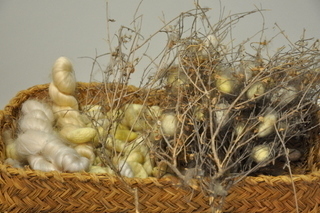 A lot of space in this museum reflects the artesan heritage and traditions of Murcia, in particular the agricultural industries which included silk production and esparto weaving, as well as the religious practices of the Huerta dwellers, Huerta being orchards or agricultural areas.
A lot of space in this museum reflects the artesan heritage and traditions of Murcia, in particular the agricultural industries which included silk production and esparto weaving, as well as the religious practices of the Huerta dwellers, Huerta being orchards or agricultural areas.
Some fascinating photos show the little houses Huerta dwellers would construct and live in wherever they worked , and several photos also show the greatest source of misery for the people who lived there, floods from the river Segura, which runs through the centre of the city.
The museum runs workshops and activity days throughout the year, and also hosts concerts and temporary exhibitions, with many school groups visiting to partake in practical workshops which teach children about the customs and traditions of the region.
Practicalities of the Museo de la Ciudad, Murcia
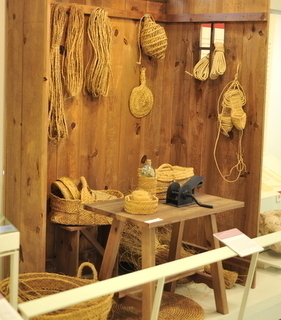 Museo de la Ciudad
Museo de la Ciudad
Plaza Agustinas, 7
Tel 968 27 43 90
Click for map, Museo de la Ciudad, Murcia
Parking. There is parking in the Jardin de la Seda nearby, or next to the Corte Ingles which is just a short distance away.
This is about a 10 minute walk from the riverside underground carparks.
Access. There is a lift for disabled access and wide aisles present no problems for those in wheelchairs.
Entrance - Free of charge
Opening Times
Winter
Closed on Mondays
Tuesday-Saturday 10-2 and 5-8
Sunday 11-2pm
Summer ( 15th June to 15th September)
Monday-Friday 10-2 and 6-9
Closed Saturdays and Sundays
Would we recommend it?
Difficult question this one. For non-spanish speakers, not particularly, as most of the exhibits are meaningless unless you know what they are and what they represent.
For Spanish speakers, yes, as the stories are really interesting and give a lot of history about the city, although its somehow lacking personality..
If we only had limited time in Murcia, it wouldnt be on the list, but if you have lots of time to spare, its worth having a look around as its free, and the temporary exhibitions can be very good.











